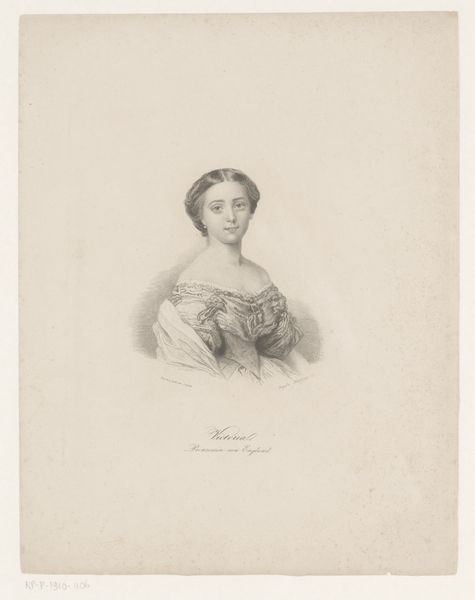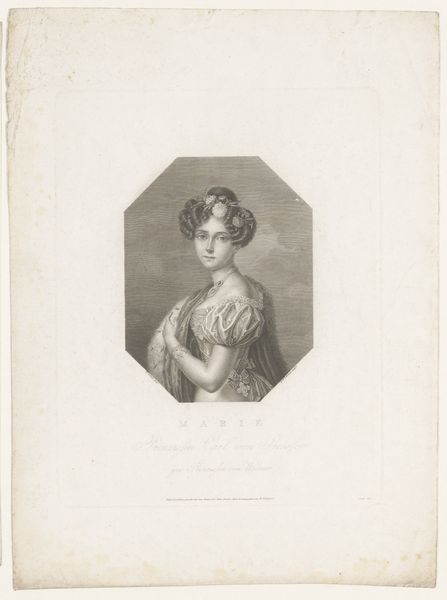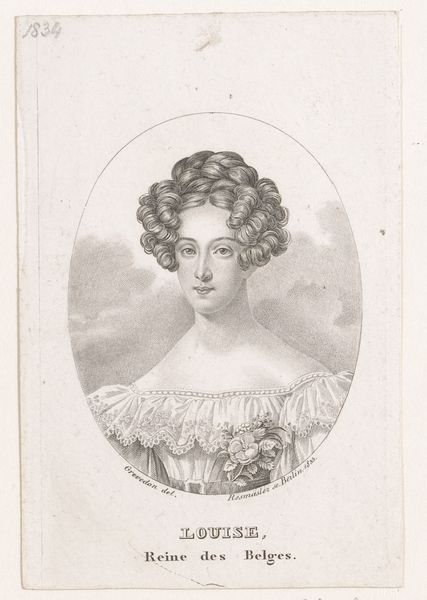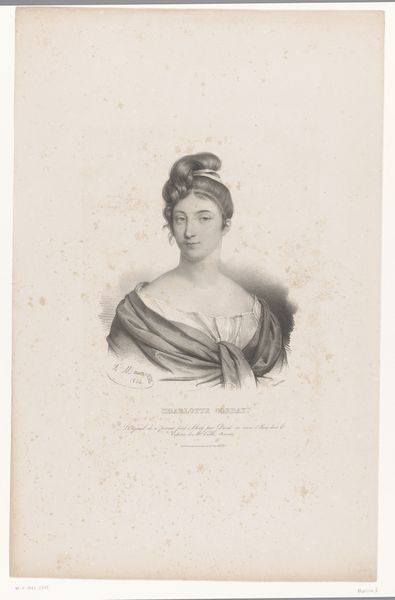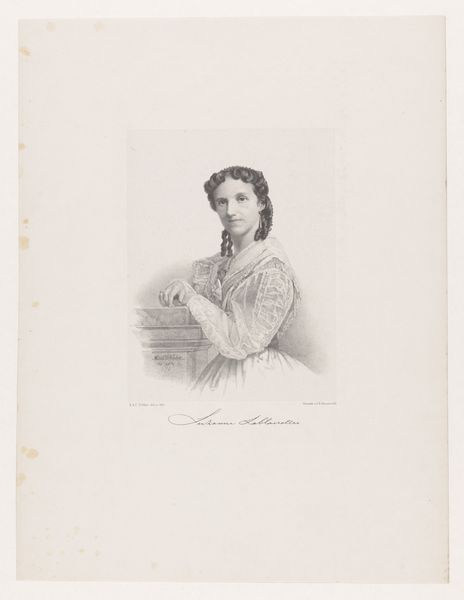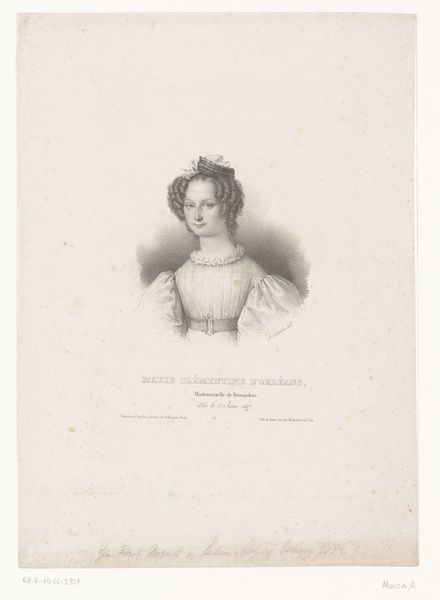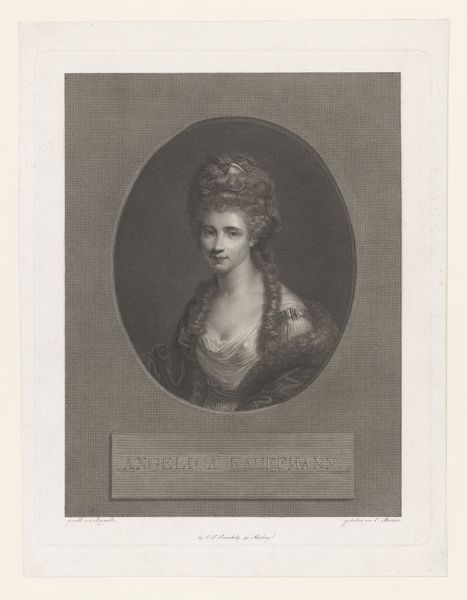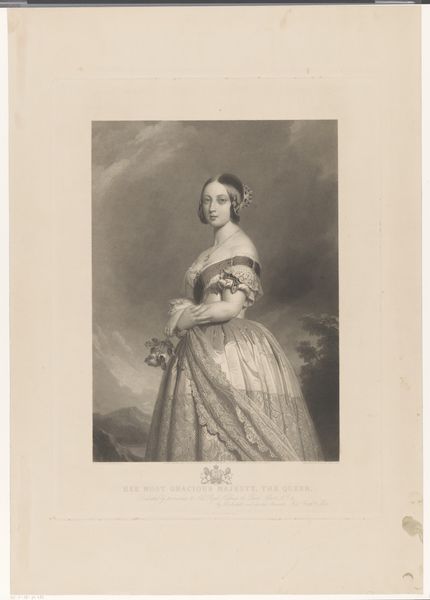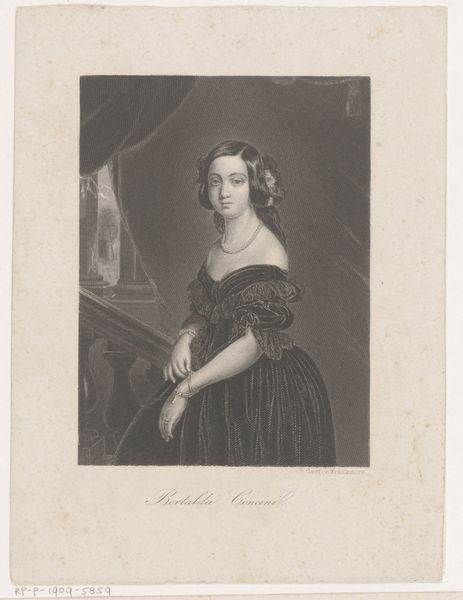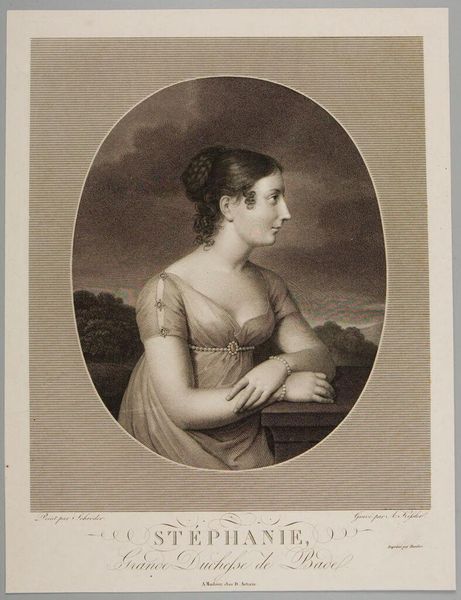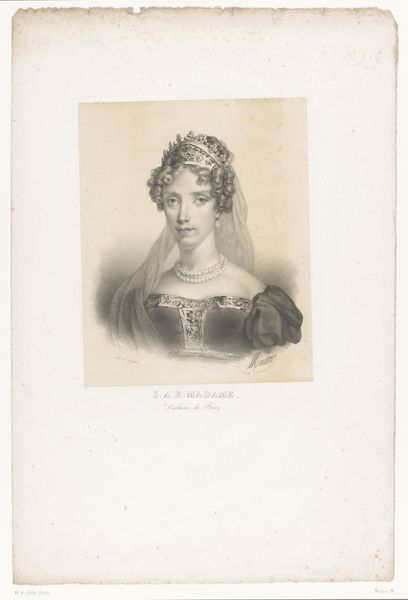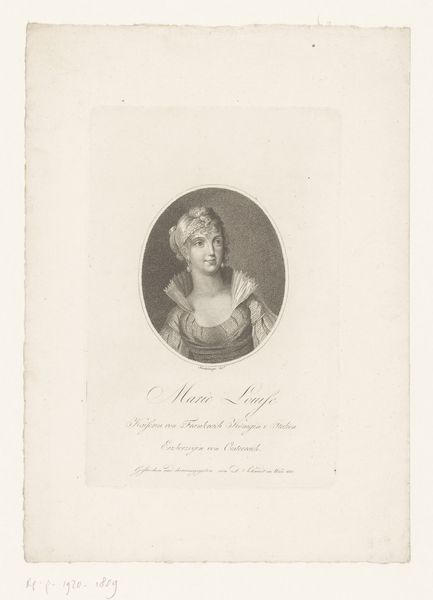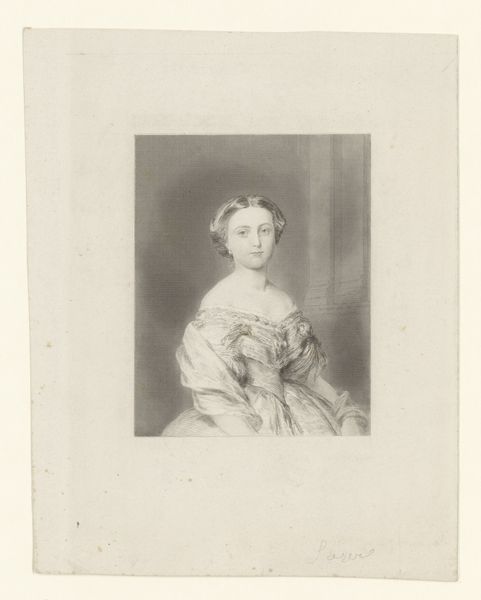
Portret van Elisabeth Amalie Eugenie in Beieren, keizerin van Oostenrijk 1837 - 1868
0:00
0:00
drawing, etching, pencil
#
portrait
#
pencil drawn
#
drawing
#
etching
#
pencil drawing
#
pencil
#
history-painting
#
academic-art
#
realism
Dimensions: height 235 mm, width 150 mm
Copyright: Rijks Museum: Open Domain
Curator: Here we have Carl Mayer's depiction of *Portret van Elisabeth Amalie Eugenie in Beieren, keizerin van Oostenrijk*, which roughly translates to "Portrait of Elisabeth Amalie Eugenie in Bavaria, Empress of Austria". This pencil and etching piece, created sometime between 1837 and 1868, captures a moment in the life of a fascinating historical figure. Editor: My immediate reaction is how somber she appears. Even framed by such opulent attire and an idyllic backdrop, there’s a prevailing sense of melancholy in her gaze. Curator: Well, let's consider the historical context. This image was produced during a period of immense social and political upheaval across Europe. These societal pressures would have shaped the reception and perhaps even the creation of a piece like this, feeding into the visual and emotional codes surrounding monarchy and its portrayal. Editor: Absolutely, and the image reflects an interesting tension. The meticulous detail in her clothing and the almost staged backdrop of Vienna hint at the traditional representations of power, but then there’s her expression. That softness counters the typical glorification you’d expect from a royal portrait, suggesting maybe a quiet resistance to those very expectations. Do you see how she holds that small rose? It feels like a symbol of fleeting beauty and perhaps personal autonomy in a world defined by rigid social structures. Curator: That's a very astute observation. In analyzing Carl Mayer’s artistic decisions, it's key to remember how portraiture functioned as a tool for projecting specific personas and consolidating power, but the etching also shows a certain intimacy. While meant to be a formal portrayal of the Empress, the realism with which Mayer captured her could allow viewers from varied social classes to identify and even empathize with the individual. The work lives in both spheres of public projection and personal reflection. Editor: Right, that’s what I find so compelling. We see the controlled representation required of her position, but beneath it, the work allows viewers space for the possibility of complex emotional depth that extends far beyond dynastic demands. The portrait functions as more than just a representation; it opens space for narrative interpretation. Curator: It is a beautiful convergence of history and personality, and thank you for shedding light on the more personal narrative the artwork enables! Editor: Thank you! It's been insightful to consider the portrait within both its historical moment and contemporary discourse.
Comments
No comments
Be the first to comment and join the conversation on the ultimate creative platform.
